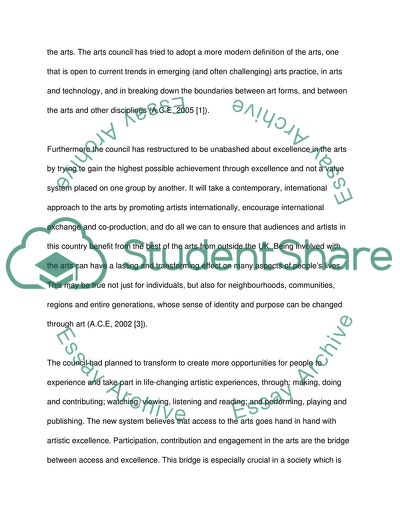Cite this document
(Arts Council of Great Britain Essay Example | Topics and Well Written Essays - 2750 words, n.d.)
Arts Council of Great Britain Essay Example | Topics and Well Written Essays - 2750 words. https://studentshare.org/visual-arts-film-studies/1712007-stategic-management
Arts Council of Great Britain Essay Example | Topics and Well Written Essays - 2750 words. https://studentshare.org/visual-arts-film-studies/1712007-stategic-management
(Arts Council of Great Britain Essay Example | Topics and Well Written Essays - 2750 Words)
Arts Council of Great Britain Essay Example | Topics and Well Written Essays - 2750 Words. https://studentshare.org/visual-arts-film-studies/1712007-stategic-management.
Arts Council of Great Britain Essay Example | Topics and Well Written Essays - 2750 Words. https://studentshare.org/visual-arts-film-studies/1712007-stategic-management.
“Arts Council of Great Britain Essay Example | Topics and Well Written Essays - 2750 Words”. https://studentshare.org/visual-arts-film-studies/1712007-stategic-management.


